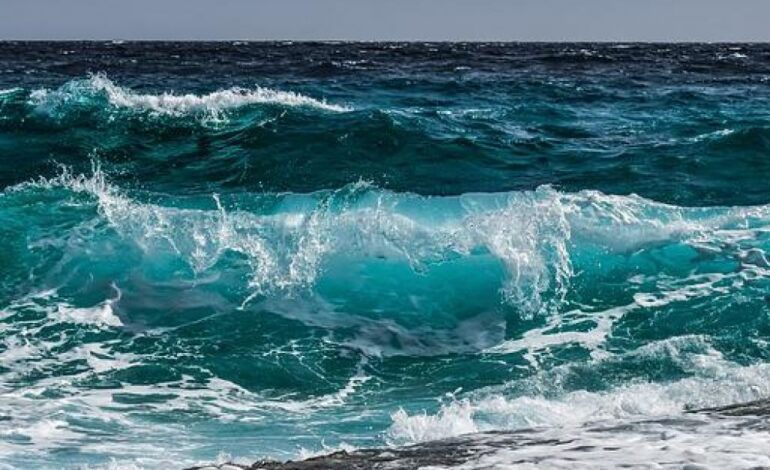Everything You Need to Know About Identifying Waves

Surfing is an exciting outdoor activity that attracts millions of people every year. People are all ages flock to the beach to ride different kinds of waves because it is fun and challenging. If you desire to get on a surfboard and ride a beautiful wave, you must understand the different elements of the sport.
Waves form in different shapes and sizes, and each of them is suitable for different skilled surfers. As a beginner, you must familiarize yourself with the waves so that when you head into the water, you are prepared for what you are up against. Surfing is hard but there are shortcuts that will help you ride your dream wave faster.
In this article, we will explore different aspects of the waves:
How are Waves Formed?
The ocean is a beautiful and dangerous place because it is very unpredictable. Waves are formed by energy passing through the water until it reaches the shore or an obstacle. Waves are often driven by the wind, creating some of the best waves for surfers.
Some waves are even formed from disturbances under the ocean, such as landslides, earthquakes, volcanic eruptions, etc. However, these waves are very destructive that often go beyond the shore with massive power.
Another reason waves form through the seafloor topography, like sandbanks, is constantly changing. These waves are more unpredictable because they keep shifting and moving.
Remember that the ocean is never still, and several variables can influence a wave. As a surfer, it is important to identify and understand these waves, so before you head into the water, do your research and learn to read different waves.
Different Parts of the Waves
When you start surfing, you need to identify the different wave parts. While it may sound intimidating at first, you will gradually understand it. The best way to learn about it is through your surf coach or trainer, who will communicate the right way to recognize waves.
Lip
The lip is the top of the waves that are visible when it is about to break. The power of the waves is located at the tip of the wave.
Face
The face or the shoulder of the wave is the unbroken section of the wave. This is where a surfer moves into the wave’s path before it breaks.

Curl
The curled part of the wave also functions as a vertical ramp where surfers can perform their tricks and maneuvers. If you watch experienced individuals surfing, you will notice that they show off their skills at this concave part of the wave.
Foam
After the wave breaks, you will notice whitewater, also known as foam. This is usually the after-effects of the wave.
Impact Zone
The impact zone is when the lip part of the waves crashes down on flat water. You will have the full impact of the wave at this place, and if you are in the water, you should avoid paddling or sitting at this location. There are tips and tricks to prevent the wave which you should master.
Tube
All waves are different, and some waves break and form tube-type shapes. Some of the most advanced surfers can surf inside these cylindrical waves, often called tubes or barrels.
Peak
The peak is where the wave breaks, so you need to be at its peak if you are about to ride a wave. As you learn to surf, you will learn to identify the peak of your wave so that you can ride your wave.
Types of Waves
When learning to surf and understand waves, you need to know that not all waves are for you. Below we will discuss the four most prominent types of waves that you will find when you are surfing:
Beach Breaks
These breaks are often formed over sandy bottoms or sandbars, perfect for beginners. Keep in mind that depending on these sandy bottoms, the shape and quality of the waves will change. These waves are hollow and powerful, which means you can easier ride them and practice your skills. However, these waves last for a few weeks to a few months; you never know when they can shift.

Reef Breaks
Reef breaks over rocky bottoms are best suited for professionals or experienced surfers. They are extremely dangerous because they break over reefs, shipwrecks, or even a rich shelf, and if you get wiped out, it can lead to injuries. But if you are an expert at what you do, then riding these waves can be extremely exciting because they are long tubing waves.
Point Break
These breaks are perfect for suitable beginners as they are long, peeling waves. Additionally, they often have open faces, making them easy to read and predict. It is most popular amongst intermediate surfers as it allows them to practice their skills and techniques. However, as a beginner, you should be able to recognize these waves as they often break over a sandy bottom or rocky point.
Rivermouth Breaks
These waves are the best breaks as they are very predictable and smooth-flowing. As the name suggests, they break over river mouths onto sandbars, creating beautiful peeling waves. Keep in mind that these waves are very rare and can occur anytime. If you find these breaks, make sure that you do not miss this opportunity.
These are some key differences that will help you understand your waves. If you are surfing, you need to identify waves, which will help you surf better. Are you heading to the beach this weekend with your family? Here are some great choices for you.










